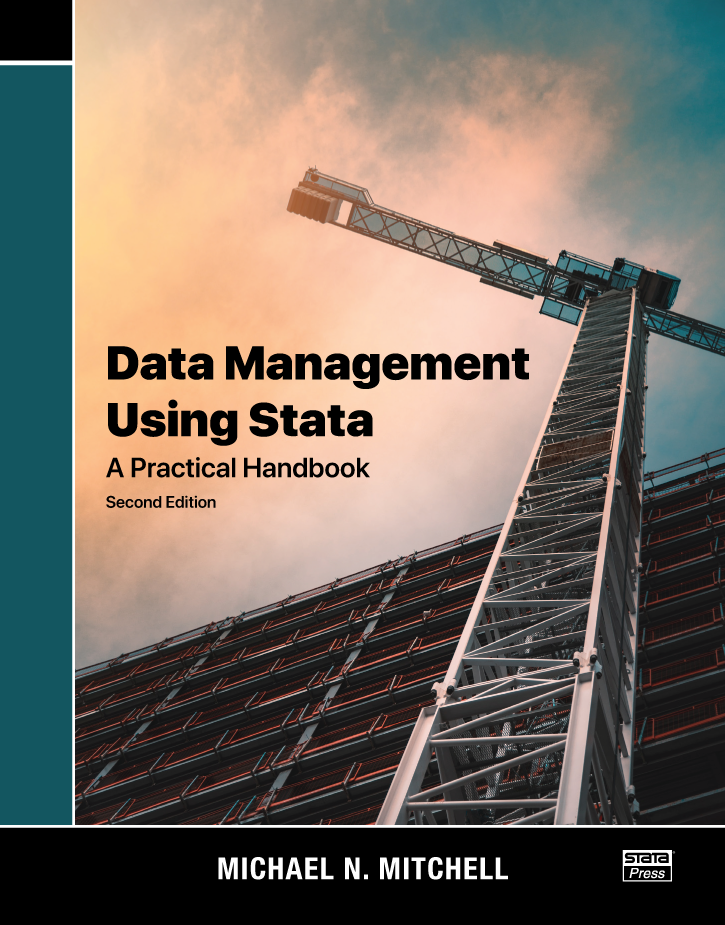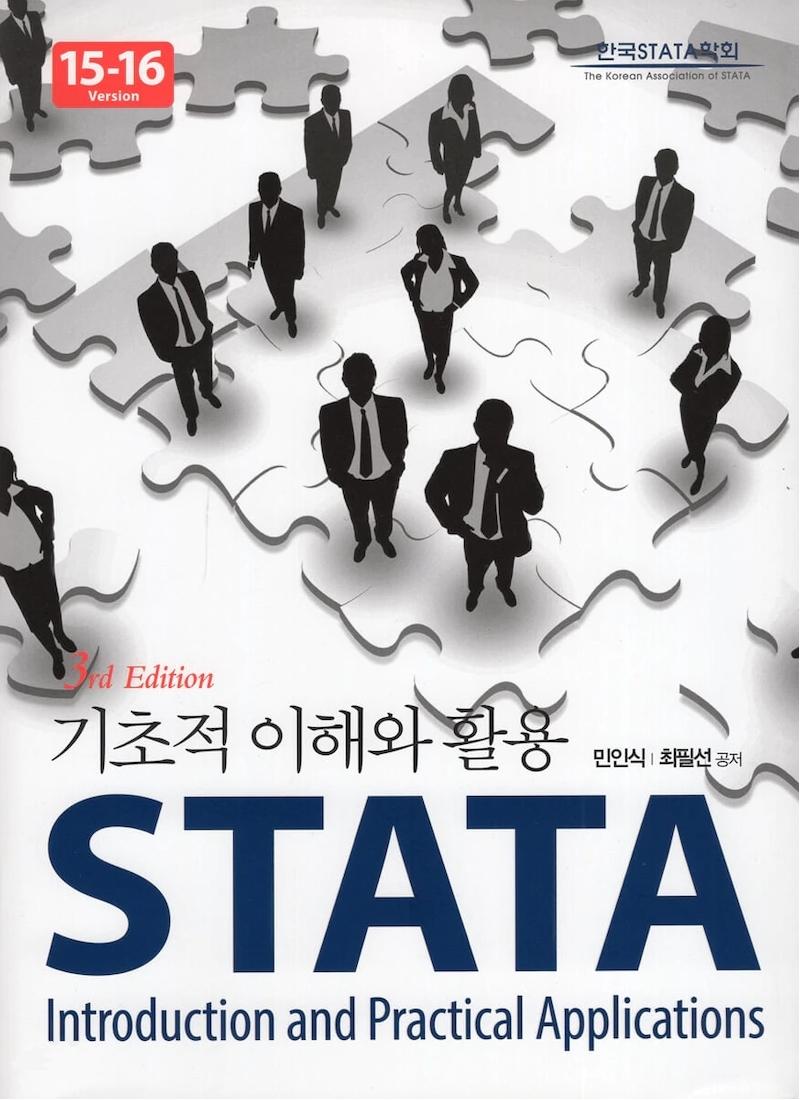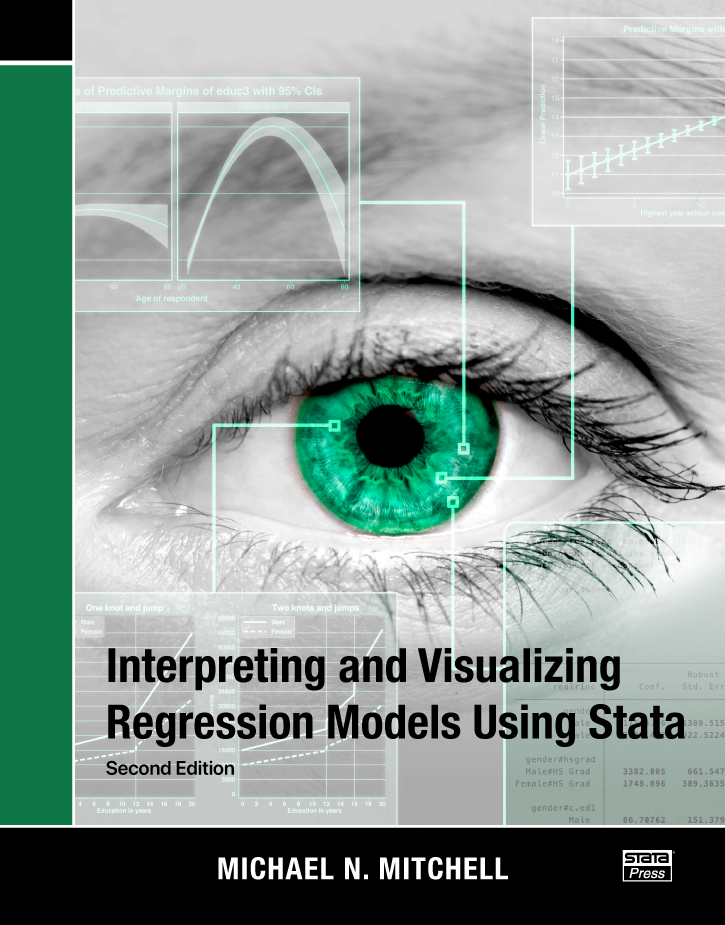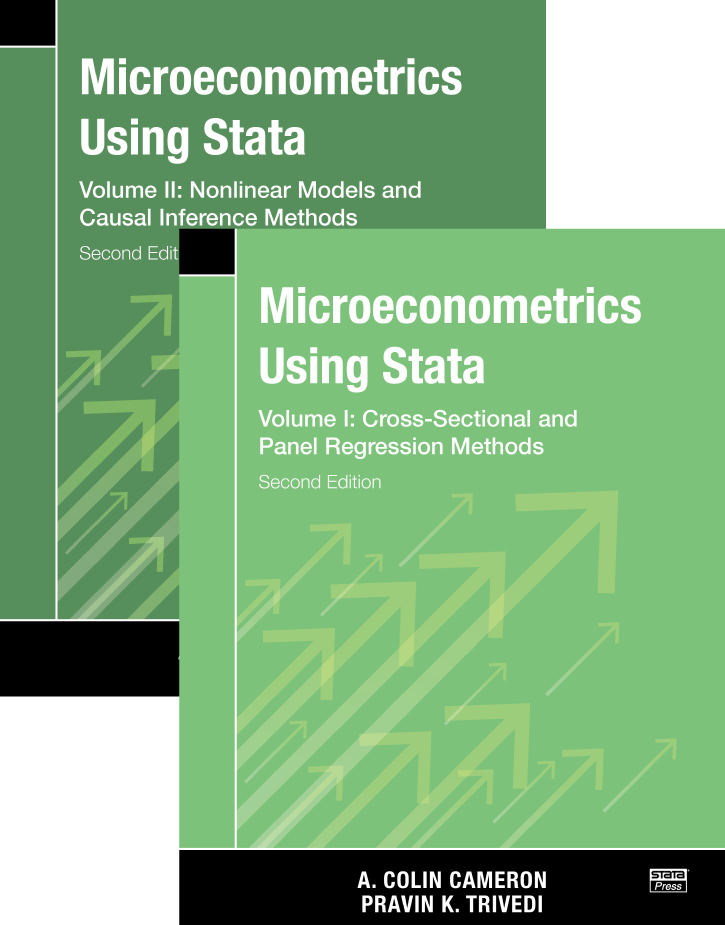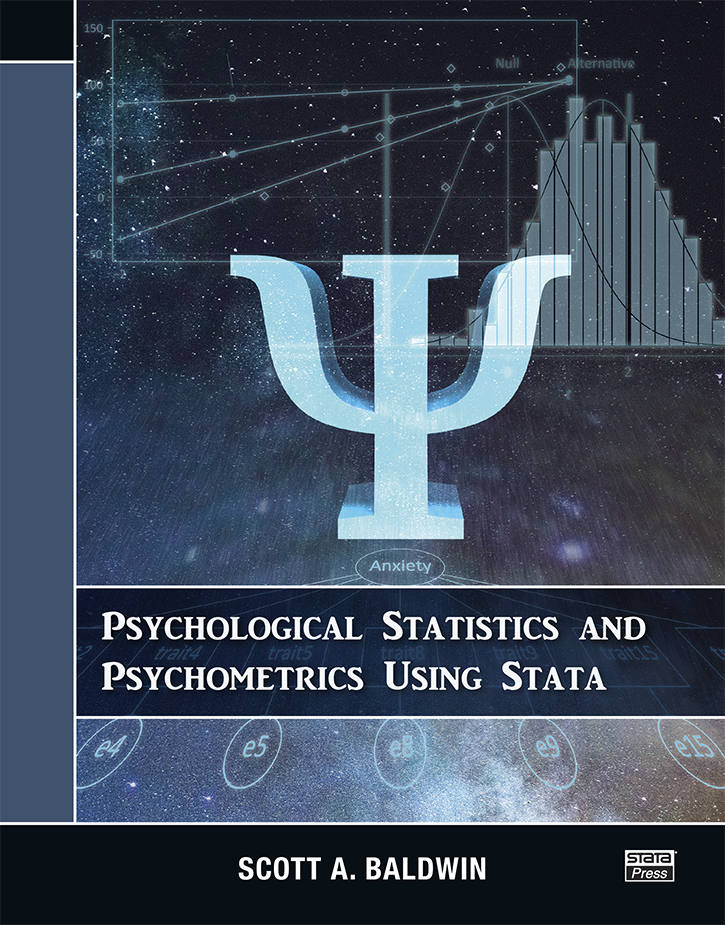
Psychological Statistics and Psychometrics Using Stata
93,000원
Author: Scott Baldwin Publisher: Stata Press Copyright: 2019 ISBN-13: 978-1-59718-303-1 Pages: 454; paperback
Psychological Statistics and Psychometrics Using Stata by Scott Baldwin is a complete and concise resource for students and researchers in the behavioral sciences. Professor Baldwin includes dozens of worked examples using real data to illustrate the theory and concepts. This book would be an excellent textbook for a graduate-level course in psychometrics. It is also an ideal reference for psychometricians who are new to Stata.
Baldwin's primary goal in this book is to help readers become competent users of statistics. To that end, he first introduces basic statistical methods such as regression, t tests, and ANOVA. He focuses on explaining the models, how they can be used with different types of variables, and how to interpret the results. After building this foundation, Baldwin covers more advanced statistical techniques, including power-and-sample size calculations, multilevel modeling, and structural equation modeling. This book also discusses measurement concepts that are crucial in psychometrics. For instance, Baldwin explores how reliability and validity can be understood and evaluated using exploratory and confirmatory factor analysis. Baldwin includes dozens of worked examples using real data to illustrate the theory and concepts.
In addition to teaching statistical topics, this book helps readers become proficient Stata users. Baldwin teaches Stata basics ranging from navigating the interface to using features for data management, descriptive statistics, and graphics. He emphasizes the need for reproducibility in data analysis; therefore, he is careful to explain how version control and do-files can be used to ensure that results are reproducible. As each statistical concept is introduced, the corresponding commands for fitting and interpreting models are demonstrated. Beyond this, readers learn how to run simulations in Stata to help them better understand the models they are fitting and other statistical concepts.
This book is an excellent textbook for graduate-level courses in psychometrics. It is also an ideal reference for psychometricians and other social scientists who are new to Stata.
-
1.2 Benefits of Stata
1.3 Scientific context
2.2 The Stata interface
2.3 Getting data in Stata
2.4 Viewing and desribing data
2.5.2 Labels
2.6.2 table and tabulate
2.7.2 Box plots
2.7.3 Scatterplots
2.8.2 Log files
2.8.3 Project Manager
2.8.4 Workflow
2.9.2 PDF documentation
2.10.2 Writing your own programs
3.2 Exploration
3.3.2 Regression equation
3.3.3 Estimation
3.3.4 Interpretation
Intercept
3.3.6 Partitioning variance
3.3.7 Confidence intervals
3.3.8 Null hypothesis significance testing
3.3.9 Additional methods for understanding models
Composite contrasts
4.2 Why categorical predictors need special care
4.3 Dummy coding
Intercept
Slopes
Polytomous by continuous interactions
Joint test for interactions with polytomous variables
5.2 Comparing two means
5.2.2 Effect size
5.3.2 Multiple comparisons
Direct adjustment for multiple comparisons
6.2 Factorial design with two factors
6.2.2 Main effects
6.2.4 Partitioning the variance
6.2.5 2 x 2 source table
6.2.6 Using anova to estimate a factorial ANOVA
6.2.7 Simple effects
6.2.8 Effect size
6.3.2 Marginal means
6.3.3 Main effects and interactions
6.3.4 Three-way interaction
6.3.5 Fitting the model with anova
6.3.6 Interpreting the interaction
6.3.7 A note about effect size
7.2 Basic model
7.3 Using mixed to fit a repeated-measures model
First-order autoregressive
Toeplitz
Unstructures
7.3.3 Pairwise comparisons
7.5 Estimating heteroskedastic residuals
7.6 Summary
8.1.2 Simulating draws out of the null and alternative distributions
8.3 Stata's commands
8.3.2 Two-sample t test
8.3.3 Correlation
8.3.4 One-way ANOVA
8.3.5 Factorial ANOVA
Type M errorss
9.2 Why clustered data structures matter
9.2.2 Conceptual issues
9.3.2 Random intercepts
9.3.3 Estimating random intercepts
9.3.4 Intraclass correlations
9.3.5 Estimating cluster means
9.4.2 Total- versus level-specific relationships
9.4.3 Exploring the between-clusters and within-cluster relationships
9.4.4 Estimating the between-clusters and within-cluster effects
9.6 Summary
10.2 Basic growth model
10.4 Adding a level-1 predictor
10.5 Summary
11.2 Example data
11.3 Common versus unique variance
11.4 One-factor model
11.4.2 Where do the latent variables come from?
11.6 Using sem to estimate CFA models
11.7 Model fit
11.8.2 Computing σ²C and σ²U for all items
11.8.3 Computing reliability—ω
11.8.4 Bootstrapping the standard error and 95% confidence interval for ω
11.9.2 Parallel items
11.11 Summary
12.2 Exploratory factor analysis
12.2.2 Extraction methods
12.2.3 Interpreting loadings
12.2.4 Eigenvalues
12.2.5 Communality and uniqueness
12.2.6 Factor analysis versus principal-component analysis
12.2.7 Choosing factors and rotation
Eigenvalue-greater-than-one rule
Scree plots
Parallel analysis
Orthogonal rotation—varimax
Oblique rotation—promax
12.3.2 Estimating a CFA with sem
12.3.3 Mean structure versus variance structure
12.3.4 Identifying models
How much information is needed to identify a model?
12.3.6 Standardized solutions
12.3.7 Global fit
TLI
CFI
SRMR
A summary and a caution
12.3.9 Parallel items
13.2 Measurement invariance
13.3 Measurement invariance across groups
13.3.2 Metric invariance
13.3.3 Scalar invariance
13.3.4 Residual invariance
13.3.5 Using the comparative fit index to evaluate invariance
13.4.2 Invariant factor means
Effects-coding constraints in Stata
13.5.3 Scalar invariance
13.5.4 Residual invariance
13.7 Summary

